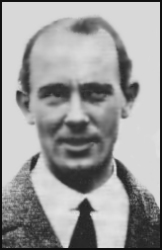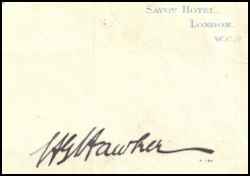
1889-1921 |
 |
|
|
|
by his wife, Muriel nee Peaty published in London, 1922 the following is an extract through the courtesy of the Moorabbin Historical Society He was born in South Brighton (Moorabbin) on 22 January 1889 and began work at the age of twelve years with a firm of bicycle and motor agents. Three years later he joined the notable Tarrant Motor Company and became a competent motor mechanic and driver with an incipient interest in aeroplanes. about 1908 he became chauffeur and mechanic for Ernest de Little, pastoralist of 'Caramut House' in the western district, and remained there until April 1911 when he went to England with a friend having similar interests. On his arrival in London he found work with three motor firms in turn and in June 1912 secured more rewarding and promising work with Sopwith Aviation Company. There he began a brilliant career as flier and engineer, a career which was to be dramatically short. He learned to fly in a few hours and obtained the Royal Aero Club Aviator's Certificate within a few weeks. Before the end of 1912 he established a British flight duration record and was appointed test-pilot for Sopwith. In 1913 he continued to participate successfully in duration, altitude and speed competitions with land planes and sea planes, making new records and winning substantial prizes. Early in 1914 he brought a biplane to Australia and gave demonstration flights from racecourses in Melbourne and Sydney. He returned to England and, on the outbreak of war in August 1914, became test-pilot for military aircraft and his skill as an engineer influenced designs. At the end of the war he returned to civil aviation and took an important part in the design and construction of a special aircraft for crossing the Atlantic from Newfoundland to Ireland. He began the flight on 18 May 1919 with Lieutenant-Commander Mackenzie-Grieve as navigator but they were forced into the sea by radiator failure. Fortunately they came down in sight of a Danish steamer and were rescued despite rough sea. The vessel was without radio facilities and news of their safety had to await arrival at a Scottish port six days later. The fliers were taken to Scapa Flow where the Navy welcomed them with great enthusiasm and sent them to London by train. At every station along the way they were greeted by large crowds of cheering people and on arrival in London were given a massive demonstration. An Australian military band and an escort of Australian soldiers. Congratulatory messages poured in from all parts of the civilized world, that from Australia by its Prime Minister. The King received them at Buckingham Palace and they were given the Air Force Cross ordinarily reserved for service men only. As the call for aircraft fell off after the war, the Sopwith Company turned to other products and Harry became involved in motor car racing and getting more power out of internal combustion engines. The H. G. Hawker Engineering Company was formed to manufacture motor-cycle and light-weight vehicle bodies of aluminium. He continued his interest in aeroplanes but on the 16 July 1921, whilst testing a biplane for entry in an Aerial derby, was killed instantly when the plane crashed for some reason unknown. His death caused world-wide sorrow and tributes poured in. Perhaps the following was typical. "Harry Hawker was stamped with genuiness. he was a simple, clean, straight-souled man. He was bred and born to do things. He did them: he did them thoroughly, deep-bitten. He made and left his mark, but on all that he did, he worked so simply, so single-mindedly, that in his passing the world of actualities loses not merely a fine airman and a cunning handler of motor-cars". The City of Moorabbin remembers him as 'Pioneer of high and long distance flying' in a worthy memorial in its airport. Editor's Note: The extract above was provided through the courtesy of the City of Moorabbin Historical Society. For the complete story of his family, which includes this account of his career, I invite you to visit their homepage. The society offers a good library of book and pictures of early Moorabbin, which covered an area from Mentone to Kingston, Oakleigh and Ormond in Australia. In addition they offer stories of some 13 other "Pioneers of Early Moorabbin & District," as well as external links to related sites. I thank the officers of the Society for permitting me to reproduce this interesting summary of his short-lived, but fascinating career. |
|
(6-16-11), you will find about 1,020 links! Among the most helpful are the following. |
|
by Tom Sheehy An abridged version of six articles originally published in the Moorabbin News commencing in January 19, 1966. The story, which can be found on the City of Kingston Historical Website, is both comprehensive and informative. It is well worth a visit. You can access it by clicking on the title. |
 |
Biography of Hawker written by his wife after his death titled "H.G. Hawker Airman". Hawker wrote a book titled "Our Atlantic Attempt". There is also an excellent biography titled "Hawker". Contributed by Ian Whalley, 5-16-11 |
|
|
|
If you have any more information on this pioneer aviator please contact me. E-mail to Ralph Cooper |


|